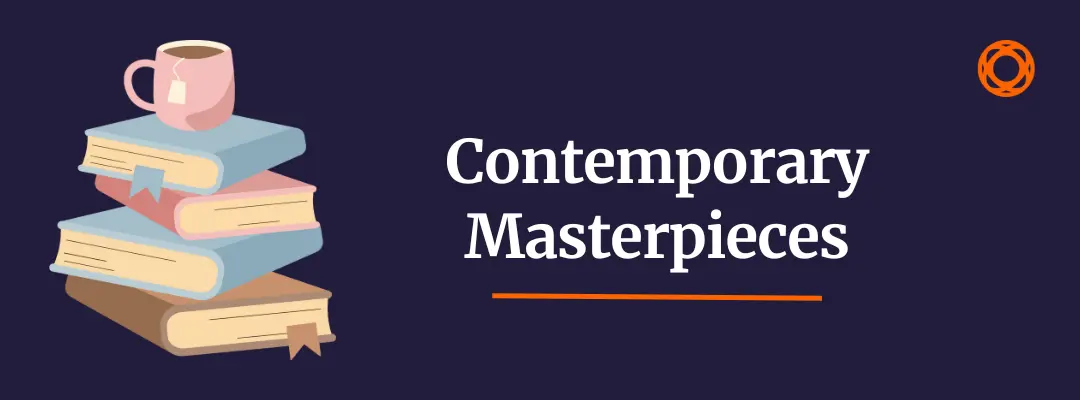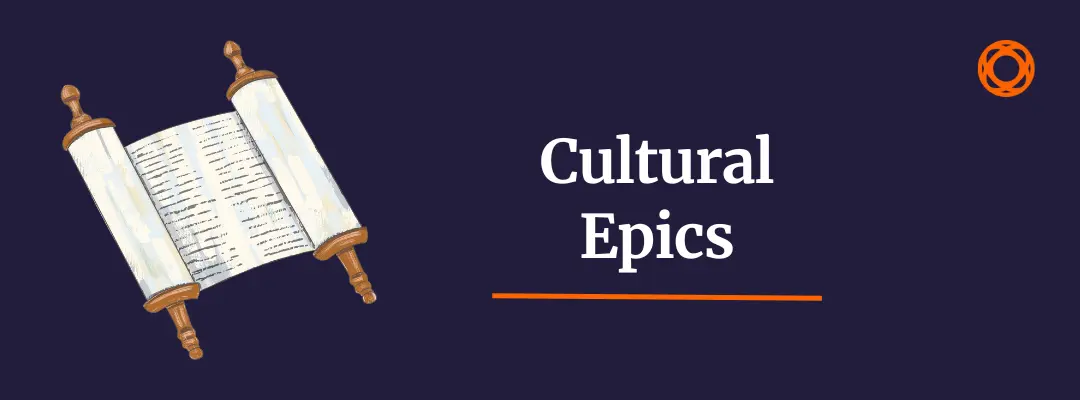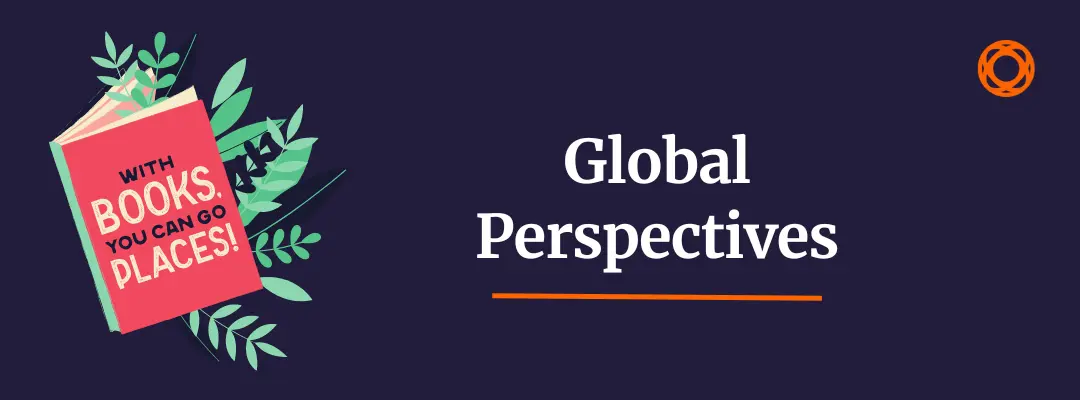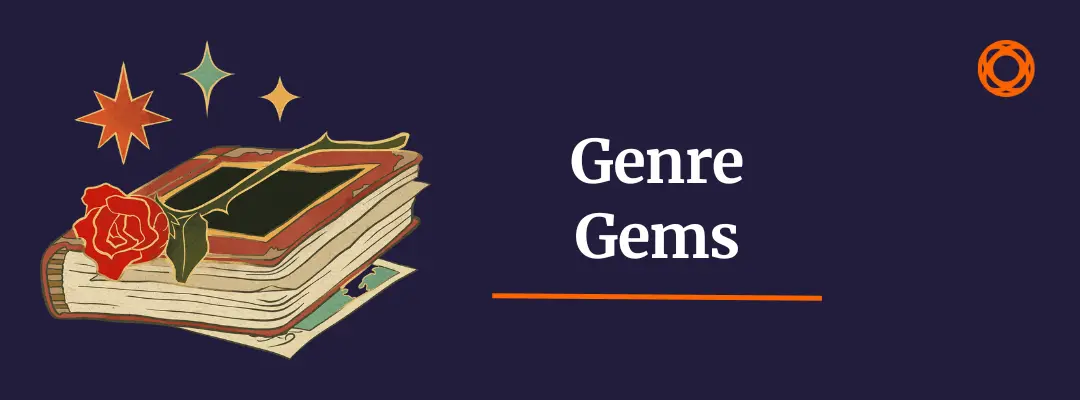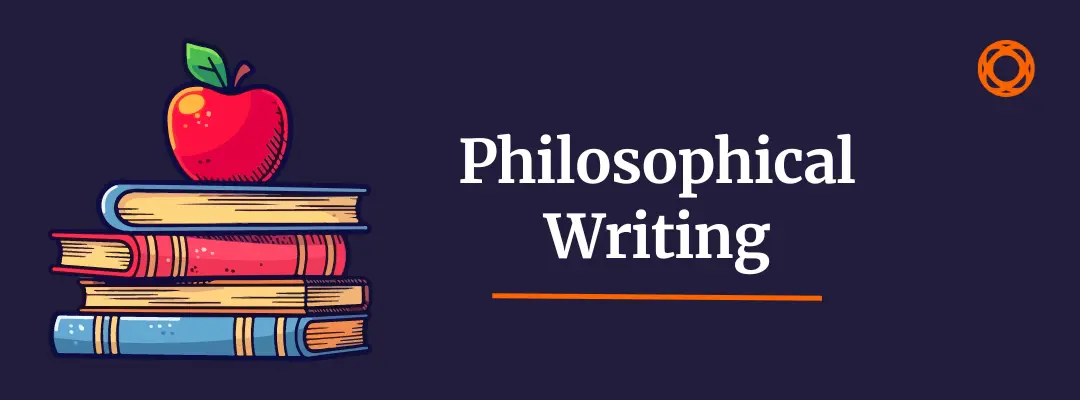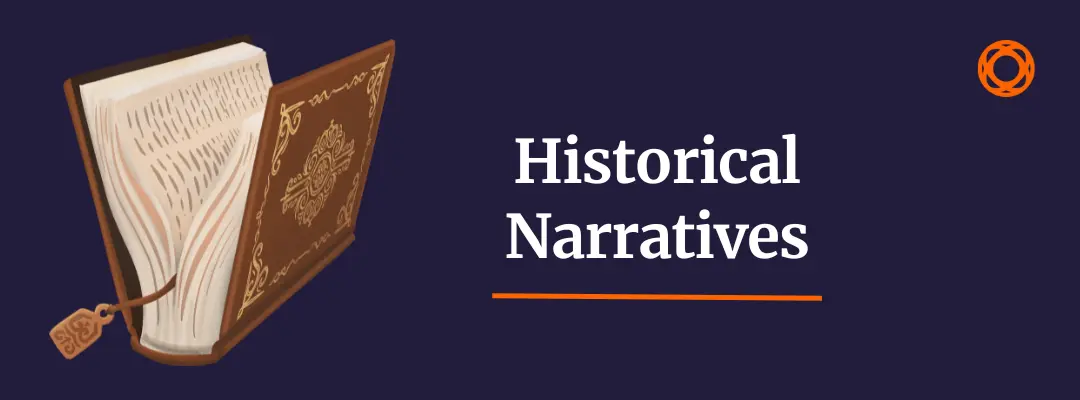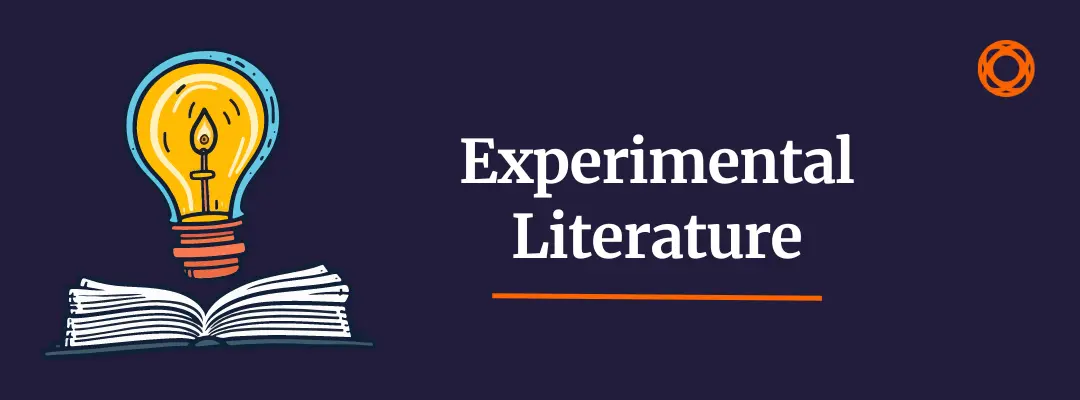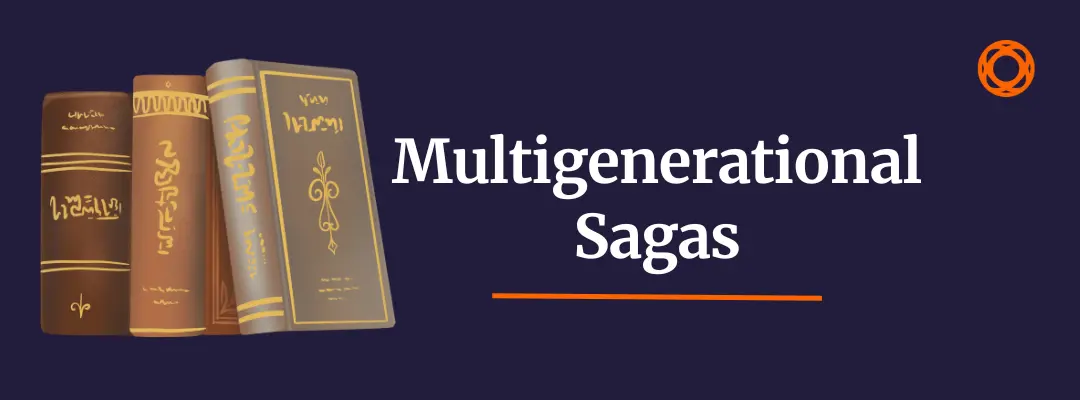100 Best Books of All Time for High School Students

By reading widely and often, we’re able to glimpse perspectives across time and place that we might otherwise never have access to. There’s possibly no greater way to learn about the world around us than by nestling amongst the pages of a great novel!
With that in mind, we’ve put together a list of 100 of the best books for high school students to read. We’ve included some of the most influential and timeless books ever written, while going beyond conventional recommendations to provide a list that reflects the diversity of the human experience.
These books have the capacity to change lives. They introduce readers to new worlds, ideas, feelings and perspectives that they may never have considered before, staying with them long after the final page.
100 Best Books of All Time for Teens
Coming across a long list of book recommendations can often feel a little overwhelming. So much of our reading is dictated by our current interests or experiences, so it can be hard to know where to begin.
To help make this list more manageable, we’ve divided it into ten categories – from contemporary masterpieces to historical narratives – so you can dip in and out depending on what takes your fancy.
Many of the books we’ve selected can be found on any keen reader’s shelf, but many are woefully undervalued, so although you might be familiar with many books on our list, we hope that plenty will be brand new to you!
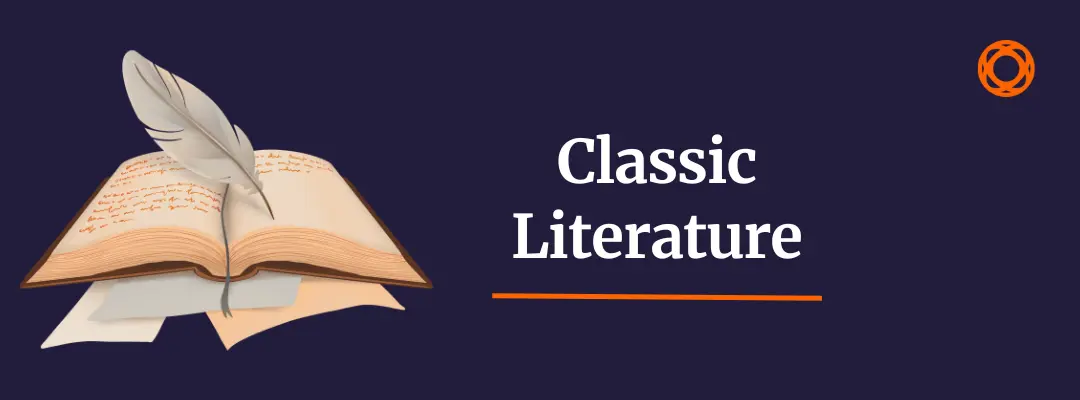
Classic literature
Classic literature refers to any book whose place in the Canon is firmly cemented. These are books that have been handed down from one generation to the next – sometimes across hundreds of years.
These books have been studied at universities and schools for as long as any of us can remember, and scholars are still finding new and exciting angles for text analysis to this day.
1. Middlemarch by George Eliot (1871)
Considered to be one of the greatest novels of the Victorian era, Mary Ann Evans wrote Middlemarch under her pen name, George Eliot, to escape the stereotypes associated with female authorship during her lifetime.
Set in the fictional town of Middlemarch, the novel delves into issues as diverse as marriage, religion, politics and education, and is as essential today as it was in the 19th century.
2. Madame Bovary by Gustave Flaubert (1856)
Madame Bovary is the most celebrated work by Gustave Flaubert, the French master of literary realism. In 1914, the book was dubbed a perfect work of fiction by author, Henry James:
‘Madame Bovary has a perfection that not only stamps it, but that makes it stand almost alone: it holds itself with such a supreme unapproachable assurance as both excites and defies judgement.’
Its tale of a loveless marriage is as poignant today as it was when it was published.
3. Nineteen Eighty-Four by George Orwell (1949)
George Orwell’s Nineteen Eighty-Four has become so influential since its release, that even if you haven’t read it yourself, you’ll likely recognise much of the parlance he coined in the novel, like ‘big brother’, ‘doublethink’ and ‘thought police’.
A chilling tale of the consequences of totalitarianism and mass surveillance, Nineteen Eighty-Four is a must-read for anyone interested in political history.
4. North and South by Elizabeth Gaskell (1855)
One of the great realist writers of the Victorian period, Elizabeth Gaskell’s novels focus on the trials and tribulations of working-class life in the newly industrialised England.
Her best known work, North and South, follows protagonist, Margaret Hale, as she moves from the south of England to the north, and witnesses the ruthless world of industrial northern England and its effects on cotton-mill workers.
5. Invisible Man by Ralph Ellison (1952)
Ralph Ellison’s vivid, ground-breaking novel, which explores the issues faced by Black Americans in the early 20th century, has been called ‘a masterpiece’ by writer, Anthony Burgess.
The book follows its narrator, invisible ‘simply because people refuse to see me’, from the American South to Harlem, New York. It’s as important in depicting the psychological and social effects of racism today as it was upon its release.
6. Pride and Prejudice by Jane Austen (1813)
Jane Austen’s Pride and Prejudice explores love, class and family in a rich, warm satire that’s funny, charming and lucidly portrays the period in which it was written.
As a historical document, it’s fascinating, but Austen’s writing has ensured that it remains timeless – evidenced by the dozens of adaptations that have been made in the past two centuries!
7. The Picture of Dorian Gray by Oscar Wilde (1890)
Oscar Wilde’s The Picture of Dorian Gray is a sinister exploration of morality and desire. The novel follows Dorian, a hedonistic young man who no longer ages. Meanwhile, a portrait – painted by his friend, Basil Hallward, and hidden away in an attic – ages in Dorian’s place.
Short and dramatic, Dorian Gray is the perfect novel to spend a quiet weekend engrossed in.
8. The Trial by Franz Kafka (1925)
Even if you’ve never read Kafka, you’ve likely heard something referred to as ‘Kafkaesque’. Kafka’s writing frequently explores bureaucracy, anxiety and alienation, and The Trial is no different.
It tells the story of Josef K., a man arrested by an authority who won’t reveal to him (nor the reader) the nature of his crime. Maddening and existential, Kafka is a master of placing the reader into the minds of his characters, with all the anxiety and uncertainty that that entails.
9. Moby-Dick, or The Whale by Herman Melville (1851)
Considered by many the great American novel, Moby-Dick tells the tale of the sailor, Captain Ahab, and his quest for vengeance against a giant whale who tore off his leg during a past voyage.
A commercial failure upon its publication, it enjoyed a much-deserved reappraisal in the 20th-century, with writer, D.H. Lawrence, calling it:
‘One of the strangest and most wonderful books in the world.’
10. Things Fall Apart by Chinua Achebe (1958)
The debut novel by Nigerian author, Chinua Achebe, Things Fall Apart explores pre-colonial Nigeria and the life of Okonkwo, a proud warrior.
As Okonkwo’s world begins to unravel, readers are left to consider the broader impact of colonialism and cultural imperialism. Poignant and powerful, Things Fall Apart is essential reading for anyone passionate about literature and world history.
Contemporary masterpieces
Thousands and thousands of new books are published each year. Inevitably, some are better than others, but the joy of reading contemporary literature is trying to discern which ones will end up as classics themselves one day!
Here are ten contemporary masterpieces that we think deserve their place amongst the greats of history.
11. The Remains of the Day by Kazuo Ishiguro (1989)
British-Japanese author, Kazuo Ishiguro, has tried his hand at genres ranging from fantasy to science fiction, but his 1989 novel, The Remains of the Day, is one of his most highly regarded.
A tender and heart-breaking story of an English butler who examines his painful past, Ishiguro expertly examines themes of national identity, memory and class.
12. Atonement by Ian McEwan (2001)
Ian McEwan is one of the most celebrated writers of the past few decades, and Atonement is his most dazzling novel.
A meditation on the power of love and art, the novel contains rich intertextual references to a number of other great novels, making it a treat for any student of literary history.
13. Girl, Woman, Other by Bernardine Evaristo (2019)
Bernardine Evaristo’s eighth novel won the coveted Booker Prize, and fans of the book include former United States President Barack Obama.
Following the lives of twelve characters navigating Britain across time, Girl, Woman, Other explores themes from identity to love as Evaristo demonstrates the potent power of literary fiction.
14. Paddy Clarke Ha Ha Ha by Roddy Doyle (1993)
Irish novelist, Roddy Doyle, tells the story of Paddy, a ten-year old boy in Dublin in the 1960s.
Doyle writes in the tone of an Irish child, creating a lucid and unforgettable character who will stay with you long after you put the book down.
15. The Handmaid’s Tale by Margaret Atwood (1985)
Margaret Atwood’s dystopian novel, The Handmaid’s Tale, set in a near-future New England, is a frightening tale of political suppression and patriarchy.
The book cemented Atwood’s place as one of the most important feminist writers of the twentieth century, with The Guardian calling it:
‘Fiercely political and bleak, yet witty and wise.’
16. Beloved by Toni Morrison (1987)
Beloved is Toni Morrison’s powerful and fervent masterpiece. It tells the story of a dysfunctional family of formerly enslaved Americans, whose home is haunted by a vengeful spirit.
The novel won a Pulitzer Prize upon its publication, and has since been voted the best work of contemporary American fiction by The New York Times.
17. Disgrace by J.M. Coetzee (1999)
Another Booker Prize winner, South African writer J.M. Coetzee’s story of shame, reputation and family is searing and deftly written.
A favourite author of critics and academics, Coetzee is an expert at exploring broad and timeless themes in everyday, ordinary situations.
18. Citizen: An American Lyric by Claudia Rankine (2014)
American poet, Claudia Rankine, released her book-length prose-poem, Citizen: An American Lyric, to acclaim in 2014.
Exploring racism in contemporary America, the New Yorker called it:
‘An especially vital book for this moment in time.’
19. The Color Purple by Alice Walker (1982)
Alice Walker’s epistolary novel, The Color Purple, explores the experiences of Black American women in the early 20th century.
A story of faith and self-empowerment, it’s undoubtedly a modern classic and has since been adapted for screen and stage.
20. The Wind-Up Bird Chronicle by Haruki Murakami (1995)
In his novel, The Wind-Up Bird Chronicle, Japanese author, Haruki Murakami, tells the story of Toru, a young man living in Tokyo whose daily routines are interrupted by a series of chaotic events.
Generally considered his masterpiece, the novel explores Japanese cultural norms, free will and solitude.
Cultural epics
Beginning far back in ancient history, epics are some of the earliest examples of literature, often originating from oral storytelling of distant lands and bloody conquests.
Many modern and contemporary authors still adapt and retell epic stories today, so here are some of our favourites from the past to the present.
21. The Odyssey by Homer (9th Century BC)
The Odyssey, an ancient Greek epic poem, is one of the oldest works of literature in existence and is still widely read today.
It follows Odysseus, king of Ithaca, on his journey home from the Trojan War. From James Joyce’s modernist masterpiece Ulysses to the American film O Brother, Where Art Thou?, The Odyssey has been adapted and reinterpreted for centuries.
22. Paradise Lost by John Milton (1667)
John Milton’s epic masterpiece, Paradise Lost, tells the biblical story of the fall of man, or the temptation of Adam and Eve by Satan.
According to historians, Milton was blind when he composed his epic, dictating the entire text to his daughter over the span of several years – a testament to the extraordinary power of his memory and imagination!
23. The Divine Comedy by Dante Alighieri (1321)
Dante’s Divine Comedy takes readers on a journey through the realms of Hell, Purgatory and Paradise, guided by the Roman poet, Virgil, and Dante’s idealised love, Beatrice. It explores morality, justice and the Christian afterlife.
Literary historians suggest that Dante was the first writer to depict human beings as products of their particular time and place, rather than the mythic archetypes common to Greek epics.
24. The Faerie Queene by Edmund Spenser (1590)
The Faerie Queene provides a glimpse into the culture of the Renaissance period, exploring themes such as courtly love, chivalry and mythical quests.
A master of allegory, each major character in Spenser’s epic represents a specific virtue or vice. For example, the villainous Duessa embodies Falsehood.
25. Metamorphoses by Ovid (8th Century AD)
Ovid’s magnum opus, Metamorphoses, weaves together many different Greek and Roman myths to explore the themes of transformation and change.
The epic has been a source of inspiration for countless artists and writers across the centuries, from Botticelli to Shakespeare.
26. The Iliad by Homer (8th Century BC)
Another Homerian epic, this time concerning the events of the Trojan War itself and the wrath of the Greek warrior, Achilles.
If you thought being obsessive about your favourite book was a modern phenomenon, you’d be wrong! It’s said that the ancient Greek conqueror, Alexander the Great, slept with a copy of The Iliad under his pillow each night.
27. Beowulf by Anonymous (Unknown)
Although its author and exact date of composition is a matter of contention among scholars, Beowulf is the oldest and one of the most important works of Old English literature. It tells the story of the titular warrior and his confrontation with monsters and dragons.
The Lord of the Rings author, J.R.R. Tolkien was deeply influenced by Beowulf, giving many lectures on the text during his time as Merton Professor of English Language and Literature at the University of Oxford.
28. Song of Myself by Walt Whitman (1855)
Adapting the epic form in the 19th century, American poet, Walt Whitman, explores and celebrates both the individuality and the interconnectedness of all human beings in his scintillating vision of America.
It’s worth considering how Whitman references, and deviates from, the epic form in Song of Myself.
29. Ulysses by James Joyce (1922)
James Joyce’s magnificent, daring and strange modernist epic, Ulysses, reimagines Homer’s Odyssey in the context of a single day in Dublin.
Although its connection to Homer isn’t always clear, neither is anything else in the novel! Its ground-breaking narrative, linguistic and formal techniques were unlike anything that came before it in the history of literature.
30. The Lord of the Rings by J.R.R. Tolkien (1955)
A modern epic inspired by the epic greats that came before it, Tolkien’s The Lord of the Rings trilogy follows many of the same patterns as its predecessors: quests, fantastical creatures and allegory.
Tolkien’s books revitalised the epic as a genre, inspiring a generation of fantasy writers from George R.R. Martin to Terry Pratchett.
Global perspectives
One of the great joys of literature is the glimpse it offers into countries and cultures that we might never otherwise visit or encounter.
Here are ten important books from around the globe!
31. Petals of Blood by Ngūgī wa Thiong’o (1977)
Kenyan author, Ngūgī wa Thiong’o, explores the complex political landscape of postcolonial Kenya in this important novel.
Thiong’o made significant contributions, not only to the global literary canon, but in his championing of indigenous languages in African literature, a commitment that led to his imprisonment in 1977.
32. Notebook of a Return to My Native Land by Aimè Césaire (1939)
Césaire’s masterpiece, a book-length prose-poem which explores colonial identity and the quest for cultural authenticity, is a must-read for any student interested in global literature.
Born and writing in the Caribbean island of Martinique, Césaire’s influence can be keenly felt in the literature and activism that sprung from his vivid and breath-taking work.
33. Midnight’s Children by Salman Rushdie (1981)
British-Indian writer, Salman Rushdie, won a Booker prize for his novel, Midnight’s Children, which has sold over a million copies in the UK alone.
It’s a magical realist story, serving as a loose allegory for the British partition of India in 1947.
34. Borderlands/La Frontera: The New Mestiza by Gloria Anzaldúa (1987)
Gloria Anzaldúa’s Borderlands is part poetry, part prose, part essay and part memoir. It explores the ethnic and social community of her youth on the border between Mexico and the United States.
Borderlands reflects how she and her community have been shaped by borders, switching between English and Spanish, as well as North Mexican and Tex-Mex dialects, to create a new language: the language of the borderland.
35. The Kite Runner by Khaled Hosseini (2003)
Hosseini’s powerful and poignant novel explores friendship, betrayal and redemption against the backdrop of Afghanistan’s tumultuous history between 1963 and 2001.
Hosseini, an Afghan-American novelist, draws on his own experiences, and the experiences of his family, to write this best-selling book.
36. Anna Karenina by Leo Tolstoy (1878)
A classic of Russian literature, Tolstoy’s Anna Karenina explores the intricacies of love, morality and societal norms in 19th-century Russia.
The novel contains many now-ubiquitous lines, including “all happy families are alike; each unhappy family is unhappy in its own way.” This line is so well-known that it even has a psychological principle named after it: the Anna Karenina Principle.
37. Mrs. Spring Fragrance by Sui Sin Far (1912)
The short story collection, Mrs. Spring Fragrance, is famous for being the earliest piece of fiction published by an author of mixed Chinese and White descent.
It provides a glimpse into the lives of early Chinese immigrants in the United States, and explores identity and assimilation in the early 20th century.
38. One Hundred Years of Solitude by Gabriel García Márquez (1967)
Colombian author Márquez’s mesmerising tale, spanning seven generations of the Buendía family, blends fantasy with history, offering a rich exploration of Latin American culture and history.
Márquez supposedly drew inspiration for the novel from the stories of his grandmother, lending the novel its gripping authenticity.
39. The Count of Monte Cristo by Alexandre Dumas (1844)
Dumas’ exhilarating adventure novel follows the story of Edmond Dantés on his journey of vengeance.
Set against the backdrop of post-Napoleonic France, the novel holds a firm place in the canon of French and global literature.
40. Season of Migration to the North by Tayeb Salih (1966)
Sudanese author Salih’s postcolonial masterpiece explores European colonialism, power dynamics and cultural dislocation.
Season of Migration to the North is one of the most celebrated texts written in Arabic, and has since been translated into more than 20 languages. Acclaimed academic, Edward Said, called it one of the six great works of Arabic literature.
Underrepresented voices
Great literature evocatively and skilfully brings us into the inner world of its characters, shining a spotlight on often marginalised voices.
Here are ten important books written by – or portraying – underrepresented voices.
41. Giovanni’s Room by James Baldwin (1956)
After publishing his first novel about growing up in a Pentecostal family in Harlem, New York in the early 20th century, Baldwin seeks inspiration from his life as a gay man for his tender, affecting second novel, Giovanni’s Room.
In 2019, BBC News listed the novel as one of the hundred most influential books of all time.
42. A Tree Grows in Brooklyn by Betty Smith (1943)
Betty Smith’s semi-autobiographical story recounts the experience of growing up in 1910’s Brooklyn, New York as a second-generation immigrant of Irish and Austrian ancestors.
The protagonist, Francie, is vividly written and completely unforgettable, as is the novel itself.
43. The Interesting Narrative of the Life of Olaudah Equiano, or Gustavus Vassa, The African by Olaudah Equiano (1789)
This captivating autobiography by a former slave is not only a gripping piece of writing but also a stunning historical document.
Equiano tells the story of his enslavement in Africa and his eventual freedom, imploring 18th-century Britain to consider the abolition of slavery.
44. The God of Small Things by Arundhati Roy (1997)
Arundhati Roy’s novel set in Kerala, India tells the story of fraternal twins Rahel and Estha. It explores the Indian caste system, colonialism and the repercussions of breaking societal boundaries.
The God of Small Things is yet another Booker Prize winner, with Roy becoming the first Indian woman to receive the award.
45. Ceremony by Leslie Marmon Silko (1977)
Ceremony is a compelling novel which follows Tayo, a Laguna Pueblo man and World War II veteran grappling with the psychological and spiritual aftermath of war.
A novel very much worth reading for its rich portrayal of indigenous American culture, Tayo finds solace in Native American traditions and ceremonies.
46. Persepolis by Marjane Satrapi (2003)
Persepolis deviates from our list so far – it’s actually a graphic novel. Although many don’t realise it, graphic novels are a form of writing (and art!) that are beginning to receive more and more attention in academia and literary study. Reading Persepolis, it’s easy to see why.
This vivid story recounting the author’s childhood and early adulthood in Iran, during and after the Islamic Revolution, is a fascinating and fulfilling read.
47. Woman at Point Zero by Nawal El Saadawi (1977)
This powerful novel depicts the life of a woman on death row in an Egyptian prison, revealing the injustices and hardships she has faced in a patriarchal society.
Its exploration of gender, oppression and resilience are profound and essential for the bookshelf of any student interested in feminist literature.
48. Between the World and Me by Ta-Nehisi Coates (2015)
Between the World and Me is a powerful letter from the author to his teenage son, exploring the complexities of being a Black American.
Its lyrical and intimate exploration of race and systemic inequality won Coates a National Book Award for nonfiction in 2015.
49. My Left Foot by Christy Brown (1954)
The artist and writer Christy Brown’s compelling autobiography follows his experience of learning to write and paint using only his left foot, despite his cerebral palsy.
My Left Foot is inspiring in its portrayal of determination and resilience, and was adapted into a film in 1989, winning Daniel Day-Lewis an Oscar for Best Actor.
50. Fun Home: A Family Tragicomic by Allison Bechdel (2006)
Another graphic novel, Fun Home is a funny but heart-rending memoir from writer, artist and feminist activist, Allison Bechdel.
The book explores familial relationships, sexuality and mortality, and is as fantastically written as it is gorgeously illustrated.
Genre gems
Genre fiction often has a reputation of being unliterary, but we’re here to bust that myth!
Here are ten seminal works of genre fiction, from horror to sci-fi, that are literary masterpieces and intriguing page-turners.
51. Dracula by Bram Stoker (1897)
Bram Stoker’s vampiric epic, Dracula, is as creepy and frightening today as it must have been over 200 years ago.
The novel has been adapted for the screen over 30 times, and while Stoker’s characters – from Dracula to Van Helsing – are ubiquitous to popular culture, nothing quite beats the original.
52. Frankenstein; or, The Modern Prometheus by Mary Shelley (1818)
Mary Shelley’s ground-breaking Gothic horror explores ambition, responsibility and the consequences of playing god.
An enduring, foundational piece of science-fiction and horror, Shelley wrote Frankenstein when she was just 18 years old.
53. Brave New World by Aldous Huxley (1931)
Brave New World presents a dystopian vision of the future in which technology, conditioning and a caste system control every aspect of humanity.
Huxley wrote a letter to George Orwell praising his novel, Nineteen Eighty-Four, but suggesting that his own vision of the future might be more accurate in predicting the future – decide for yourself!
54. Fahrenheit 451 by Ray Bradbury (1953)
Another dystopian classic, this time depicting a future in which books are banned and “firemen” burn any that are found.
Bradbury’s novel is a chilling depiction of censorship, and the line ‘there must be something in books, things we can’t imagine, to make a woman stay in a burning house; there must be something there. You don’t stay for nothing,’ is a defiant ode to the power of literature itself.
55. The Big Sleep by Raymond Chandler (1939)
Raymond Chandler is a master of detective fiction. His most celebrated novel, The Big Sleep, follows private investigator, Philip Marlow, as he becomes enveloped in a complex web of crime in the dark underbelly of Los Angeles.
Chandler’s style has had a permanent impact on crime literature, as well as film.
56. The Man in the High Castle by Phillip K. Dick (1962)
Phillip K. Dick’s The Man in the High Castle is an essential novel in the genre of alternative history.
Imagining a world in which the Axis powers have won World War II, and the United States is divided between Nazi Germany and Imperial Japan, Dick’s novel is thought-provoking and imaginative.
57. A Wizard of Earthsea by Ursula K. Le Guin (1968)
Le Guin’s fantasy novels have consistently challenged the conventions of the genre in exciting and profound ways.
A Wizard of Earthsea was one of the first fantasy novels to feature a non-European setting, and has had a profound influence on subsequent works in the genre.
58. Jane Eyre by Charlotte Brontë (1847)
Charlotte Brontë’s classic novel, Jane Eyre, is considered the high-watermark of romantic fiction.
Following the passionate and tumultuous love story between a governess and her employer, the novel offers a rich and nuanced exploration of character, love and society.
59. The Talented Mr. Ripley by Patricia Highsmith (1955)
Patricia Highsmith’s first novel in her series about the charming, psychopathic killer Tom Ripley is a classic slice of crime thriller.
Set against a gorgeous backdrop of mid-century Europe, Highsmith examines the post-war American psyche with vigour.
60. The Haunting of Hill House by Shirley Jackson (1959)
Another seminal work of horror fiction, Jackson’s novel expertly weaves psychological terror with paranormal investigation.
At this point, the haunted house is a cliché in film and literary horror, but it all began in Shirley Jackson’s terrifying Hill House.
Philosophical writing
Great novelists are able to grapple with existential, philosophical themes as deftly as any celebrated philosopher.
Here are ten of the best philosophical texts ever written – perfect for the bookshelf of any reflective student.
61. The Stranger by Albert Camus (1942)
Meursault, the protagonist of The Stranger, navigates a detached and indifferent world, leading to a seemingly inexplicable crime.
Camus’ portrayal of existentialism and absurdism in The Stranger helped gain him a Nobel Prize for Literature in 1957.
62. In Search of Lost Time by Marcel Proust (1927)
A monumental work by the master of memory, Marcel Proust, In Search of Lost Time is a powerful and profound examination of the human experience and time. Author, Edmund White, has called it:
‘The most respected novel of the 20th century.’
63. Nausea by Jean-Paul Sartre (1943)
One of the most ground-breaking philosophers of the 20th-century, Sartre’s philosophical novel, Nausea, grapples with existential angst and absurdity. Written in 1938, it intelligently reflects the climate leading up to World War II.
64. Crime and Punishment by Fyodor Dostoevsky (1866)
Written following Dostoevsky’s ten-year exile in Siberia, Crime and Punishment explores morality, guilt and redemption in this novel informed by the author’s own punishment.
This masterful novel also inspired an earlier entry in our list: Kafka’s The Trial.
65. Molloy by Samuel Beckett (1951)
Samuel Beckett is best known for his plays, including the existentialist masterpiece Waiting for Godot, but his novel, Molloy, is just as existential and absurd.
Beckett originally wrote the novel in his second language (French) because he was less fluent in it, believing it gave his writing a more simplistic and direct style.
66. The Magic Mountain by Thomas Mann (1924)
Thomas Mann’s The Magic Mountain provides a nuanced perspective on the prelude to the First World War, following protagonist, Hans Castorp, as he grapples with time, illness and the philosophical discussions of patients in a Swiss sanatorium.
67. Cloud Atlas by David Mitchell (2004)
Mitchell’s Cloud Atlas is a modern philosophical masterpiece. Exploring contemporary concerns about globalisation and technology, this dazzling novel weaves together six interconnected stories spanning time – and even genre!
68. The Road by Cormac McCarthy (2006)
The Road follows a father and son navigating the desolate landscape of a post-apocalyptic world. Throughout the novel, McCarthy starkly portrays the human condition and muses ethical questions in the face of adversity.
Before his death in 2023, McCarthy was considered one of the greatest living writers and will no doubt go down as a modern great.
69. White Noise by Don DeLillo (1985)
Exploring a fear of death in a newly technological society, White Noise is a classic of postmodern fiction. Its satirical take on consumer culture combines with a depiction of contemporary anxiety to capture the cultural atmosphere of the late 20th-century with aplomb.
70. The Master and Margarita by Mikhail Bulgakov (1967)
Another philosophical novel, another Russian master – this time, from the 20th-century!
Bulgakov’s novel tells the story of Satan visiting Moscow to challenge the moral and ideological foundations of society. Its rich blend of satire and fantasy offers a critique of Soviet society, but more profoundly, explores the basis of good and evil. As such, it was censored until its eventual publication in 1967 – 30 years after it was written.
Historical narratives
We can learn a lot about history by reading books from any given time period, but it can be just as fascinating to explore historical fiction, written by contemporary authors, drawing parallels between the modern day and the historical past.
Here are ten of our favourite historical narratives from across time.
71. Wolf Hall by Hilary Mantel (2009)
Wolf Hall is Hilary Mantel’s masterpiece of political intrigue in the court of Tudor England. Told through the eyes of Thomas Cromwell, the novel is a wonderful portrayal of power dynamics and moral complexities, earning her a Booker Prize in 2009.
72. Catch-22 by Joseph Heller (1961)
Catch-22 is a smart and perceptive satire on the absurdity of war and bureaucracy, following the story of Captain John Yossarian through World War II. The novel coined the term “catch-22”, meaning a no-win situation.
73. The Zone of Interest by Martin Amis (2014)
Martin Amis’ chilling historical fiction, The Zone of Interest, portrays the inner lives of Nazi officials overseeing the Auschwitz death camp in Germany. The book has recently been turned into an acclaimed film by director, Jonathan Glazer.
74. A Tale of Two Cities by Charles Dickens (1859)
Although best known for his satirical and timeless satires of Victorian England, Dickens’ historical epic, A Tale of Two Cities, is one of his best-loved books.
Set against the backdrop of the French Revolution, its portrayal of sacrifice, resurrection and justice is whip-smart and incredibly compelling.
75. American Pastoral by Philip Roth (1997)
The first instalment of his loose ‘American trilogy’, Philip Roth’s American Pastoral is perhaps his most well-loved work.
Exploring the disintegration of the American Dream in the 1960s during the Lyndon B. Johnson presidency, the sublime American Pastoral earned Roth the Pulitzer Prize for Fiction in 1998.
76. The Hunchback of Notre-Dame by Victor Hugo (1831)
French author, Victor Hugo, transports readers to medieval Paris, and the life of the deformed bell-ringer Quasimodo, in The Hunchback of Notre-Dame.
The text’s rich historical and architectural detail has been celebrated not only as a prominent work of fiction, but for actually inspiring the preservation of the Notre-Dame Cathedral in Paris!
77. The Scarlet Letter: A Romance by Nathaniel Hawthorne (1850)
Hawthorne’s classic work of American literature, The Scarlet Letter, explores the consequences of societal expectations in Puritan New England, and is a fascinating insight into the beginning of European Settlement in America.
78. Mason & Dixon by Thomas Pynchon (1997)
A postmodernist master, Thomas Pynchon’s foray into historical fiction is as rich and complex as any of his other celebrated novels.
Mason & Dixon tells the story of two famous 18th-century surveyors, Charles Mason and Jeremiah Dixon, and is an intricate exploration of both history and science.
79. To Kill a Mockingbird by Harper Lee (1960)
It’s rare you’ll find a list of the most important novels of all time without seeing To Kill a Mockingbird. Harper Lee’s story of racial injustice in the American South in the 1930s is a must-read for students of literature.
80. Ragtime by E.L. Doctorow (1975)
Doctorow vividly captures the spirit of early 20th-century America in Ragtime, a novel which weaves together the stories of several fictional and historical characters to innovatively blend fact with fiction.
This radical and exciting novel has since been adapted for the stage as a musical.
Experimental literature
To read widely across different time periods is to observe how writing changes from one generation to the next, sometimes radically.
This kind of evolution wouldn’t be possible without authors keen to experiment with the tools at their disposal, creating new methods of self-expression in the process!
81. Mrs Dalloway by Virginia Woolf (1925)
Virginia Woolf’s Mrs Dalloway is considered the high-point of modernist literature. Her revolutionary use of stream-of-consciousness prose – aimed at reflecting the inner monologue of her characters – helped change literature forever.
Author, Michael Cunningham, has called Mrs Dalloway:
‘One of the most moving, revolutionary artworks of the 20th century.’
82. Their Eyes Were Watching God by Zora Neale Hurston (1937)
A classic of Harlem Renaissance literature, Zora Neale Hurston’s novel was initially poorly received. It has since become a coveted classic, with TIME naming it one of the hundred best novels of the past century.
Her use of Black Southern vernacular is a daring and original way of developing character in her work, and has been emulated in many contemporary texts.
83. Tender Buttons by Gertrude Stein (1914)
Early American modernist, Gertrude Stein, was a friend of leading artistic figures in the early 20th century including Pablo Picasso and Ezra Pound.
In her ground-breaking work of prose-poetry, Tender Buttons, she expertly demonstrates her fascination with the basic structures of language and sound.
84. On the Road by Jack Kerouac (1957)
Jack Kerouac was a leading light in the Beat Generation, an experimental literary group of American writers. In his strange and seminal novel, On the Road, Kerouac explores travel, jazz, poetry and subculture, which Thomas Pynchon describes as:
‘One of the great American novels.’
85. If on a Winter’s Night a Traveler by Italo Calvino (1979)
A postmodern classic, Italian author Italo Calvino’s If on a Winter’s Night a Traveler is a fascinating exploration of metafiction and the reading process. The first section of each chapter is addressed in second person to the reader, describing the process of reading itself.
86. Slaughterhouse-Five by Kurt Vonnegut (1969)
Inspired by Vonnegut’s own trauma, the satirical anti-war novel, Slaughterhouse-Five, is his most celebrated work.
Much like Calvino, Vonnegut’s writing utilises metafiction to examine the process of reading and writing. The first chapter of Slaughterhouse-Five is written as an author’s preface, detailing Calvino’s experience of writing the novel. This unconventional narrative structure has continued to inspire generations of writers since its release.
87. Annihilation by Jeff VanderMeer (2014)
Jeff VanderMeer’s Annihilation takes the well-worn science-fiction genre and gives it a new, experimental edge. The first in a trilogy, it tells the story of a mysterious area known as ‘Area X’, which fascinates and terrifies researchers in equal measure.
An engrossing exploration of climate change and bureaucracy, Annihilation is experimental literature for the 21st century.
88. The Waste Land by T.S. Eliot
T.S. Eliot’s long, landmark modernist poem reflects the disillusionment of a society in the aftermath of World War One.
Its fragmented structure and diverse allusions are haunting and complex, and to this day, academics are still trying to unravel its rich web of references.
89. Fear and Loathing in Las Vegas by Hunter S. Thompson (1971)
Hunter S. Thompson invented a new genre of writing with his semi-autobiographical novels: gonzo journalism.
A method of writing in which the author places themselves into strange and intriguing spaces, Fear and Loathing in Las Vegas is gonzo journalism’s high-water mark. The novel explores hedonism and 1960s counter-culture in an exciting, darkly hilarious way.
90. No One Is Talking About This by Patricia Lockwood (2021)
Patricia Lockwood’s poignant and affecting novel, No One Is Talking About This, is truly literary experimentation for the 2020s.
Mostly written on her iPhone, the novel’s exploration of social media and its troubling relationship to reality is funny and heart-breaking in equal measure. It’s essential for anyone interested in how authors are still experimenting with literature to this day.
Multigenerational sagas
Novels hold a power that we don’t: they can traverse across time, exploring the inner lives of several generations at once. Multigenerational novels are powerful in both their personal examination of family and their unique historical perspectives.
91. Kindred by Octavia Butler (1979)
Octavia Butler’s gripping and affecting Afrofuturist adventure isn’t your typical science-fiction novel. It tells the story of a contemporary Black American, Dana, who begins travelling back in time by accident, her life intertwining with that of her ancestors.
Kindred explores slavery, family ties and modern identity in a profound way.
92. East of Eden by John Steinbeck (1952)
Steinbeck’s epic, East of Eden, spans several generations of the Trask and Hamilton families, offering a modern retelling of the biblical story of Cain and Abel.
Its exploration of good and evil and complex family relationships demonstrates why Steinbeck is still so passionately studied in schools to this day.
93. Middlesex by Jeffrey Eugenides (2002)
In Middlesex, we follow the Stephanides family over several decades, exploring identity, gender and the immigrant experience. Its searing social commentary won its author the 2003 Pulitzer Prize for Fiction.
94. Roots: The Saga of an American Family by Alex Haley (1976)
Alex Haley’s semi-autobiographical novel was a cultural phenomenon upon its publication. It traces the Black American writer’s family across generations, from the capture of his ancestor, Kunta Kinte, in Africa to the struggle of his recent descendants in America.
95. The Way of All Flesh by Samuel Butler (1903)
Initially censored due to its controversial content, Samuel Butler’s The Way of All Flesh is now a celebrated piece of 20th-century literature. Its story spans several generations of the Pontifex family, providing a satirical critique of Victorian society.
96. Sons and Lovers by D.H. Lawrence (1913)
Modernist master, D.H. Lawrence, tells the story of the Morel family in Sons and Lovers. Its psychological depth, vivid characters and expertly written prose make it one of Lawrence’s very best pieces of work.
97. The Sound and the Fury by William Faulkner (1929)
Faulkner’s staple of American literature, The Sound and the Fury, explores the history of the American South by way of the Compson family’s decline over several decades.
Utilising Faulkner’s typical style of stream-of-consciousness and unconventional narrative structure, this profound novel is worthy of any bookshelf.
98. The House of the Spirits by Isabel Allende (1982)
Allende’s magical realist story of the Trueba family in Chile explores not only the changes in familial relations over time, but in politics and society at large.
This novel began as a letter from Allende to her dying grandfather, which she began writing on 8th January, 1981. Following this novel, Allende began writing all her books on January 8th!
99. Pachinko by Min Jin Lee (2017)
In Pachinko, Min Jin Lee traverses the lives of several generations of a Korean family living in Japan, exploring identity, discrimination and resilience.
The New York Times named it one of the best books of 2017, and its stature is only likely to grow.
100. The Sparsholt Affair by Alan Hollinghurst (2017)
Alan Hollinghurst’s cross-generational saga deftly tracks the changing attitudes to homosexuality in Britain, from the Second World War to the present day.
One of the Booker Prize winner’s most ambitious and affecting novels, The Sparsholt Affair will leave a lasting impact, offering readers a new perspective on British social history.
We hope this list serves as a guide to the rich and complex history of literature, and that it gives you a taste of the kind of texts you might encounter at university and beyond.
Happy reading!

By Sam Cox
Sam is a recent English graduate from the University of Bristol whose interests include twentieth-century fiction, film, and cultural criticism.
Recommended articles
Best Universities to Study Medicine in the World
A degree in Medicine spans many years, so it’s important to make a good choice when committing yourself to your studies. This guide is designed to help you figure out where you'd like to study and practise medicine. For those interested in getting a head start, the...
What Is A Year Abroad?
One of the great opportunities offered to UK university students is taking a year abroad. But what does this involve? Who can do it? What are some of the pros and cons? In our year abroad guide, we’ll explain some of the things to bear in mind when considering this...
The Ultimate Guide To Summer Internships
Are you eager to make the most of your summer break and jumpstart your career? There are so many productive things students can do in the summer or with their school holidays, and an internship is one of the most valuable! A summer internship could be the perfect...
